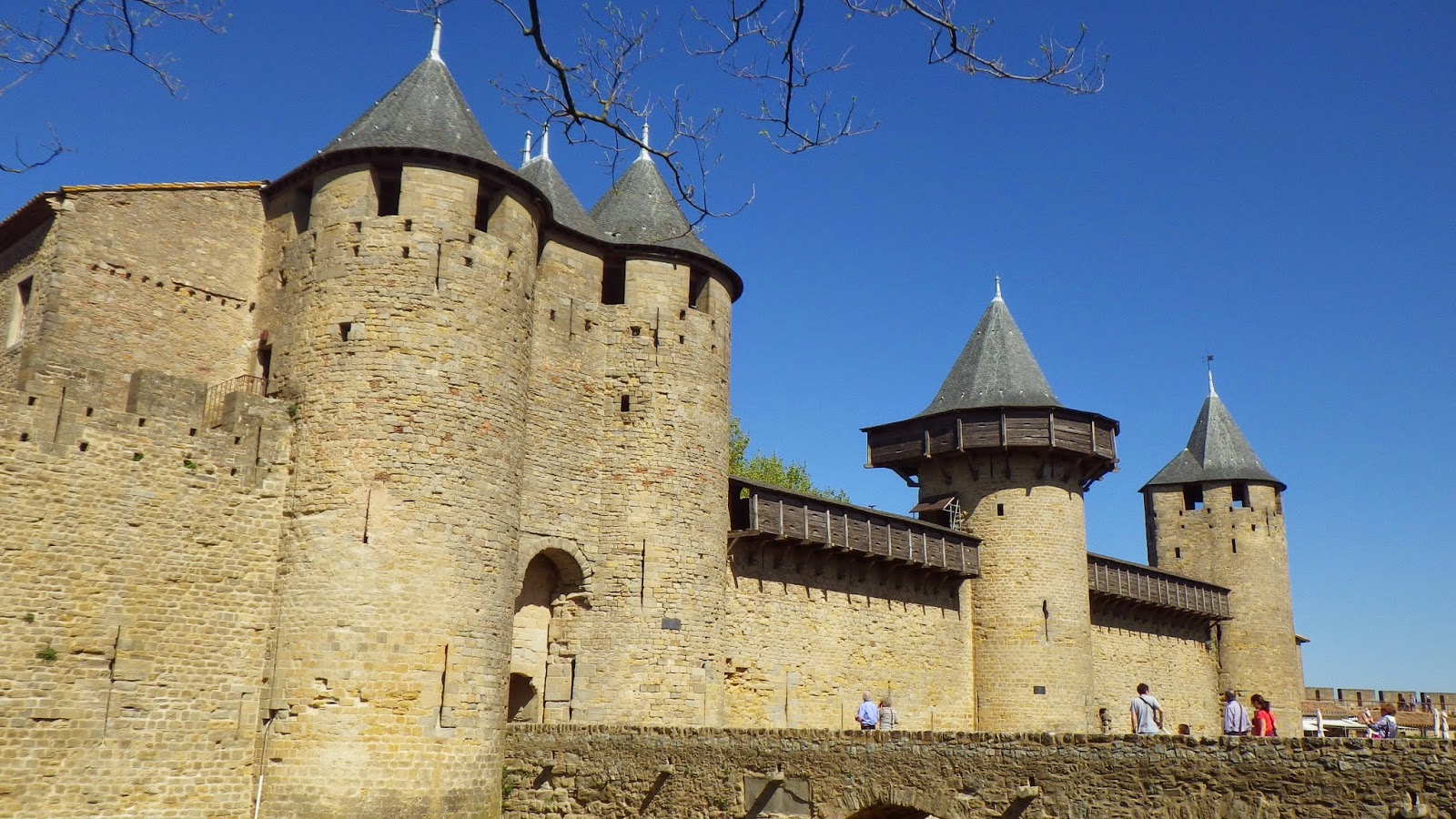 |
| Full moon over Carcassonne |
Years ago, I remember, I usually felt some unease, when in France, probably because I don't speak any French and therefore somehow felt vulnerable there. Since Elisabet dominates French almost as a native, things are different now, and some days short of Eastern we went on a short holliday to our Northern neighbour country.
click to read on
We had booked our first night in the city of Ax Les Thermes, but instead of going there directly, we went a little further North to the village of Lapenne, where we wanted to visit a Bamboo park. The additional kilometres were well worth the effort, and we enjoyed the relaxing hours we spent there very much. I hadn't been aware of the broad variety of the different species of bamboo, and it was very nice to see so many classes of that plant - light coloured, dark coloured, fast growing, high growing, supported by round shafts and even so by rectangular shaped shafts... The caracteristic traits, as well as the differences among the varieties were generally well explained, and often, various species were planted one next to the other, so that we were able to compare them directly.
The stunning, private park features a number of differently designed sub-divisions, say, gardens, a bamboo forest and also a labyrinth made of high growing bamboo, among others. It even allows to see some constructions made of bamboo, as for example the reception building... bamboo, an interesting plant.
 |
| Relaxing atmosphere |
Then, it was time to go to Ax Les Thermes. We arrived late and therefore didn't get to see much of the city that night, but at least we were able to make a stroll through the pintoresque city centre. Next day, however, Ax Les Thermes underwent a close inspection by us. After a breakfast at Le Grand Café we visited some of the hot water springs. At least two of them are equipped with a sort of pool, one can sit at, while dangling one's legs into the sulphurous hot liquid.
 |
| Le Bassin des Ladres |
Next, we went on a walk through a very nice and well maintained botanic garden, where a rich variety of different trees grows. Especially the sequoia trees impressed us much. After a rest in their shadows that recharged our batteries, we felt confident enough to go up a hill above the city, where a monument is located. It's purpose, if I remember it well, is to honour one of the main springs of the city, but that I'm not sure of.
 |
| Botanic Gerden |
 |
| Monument above Ax Les Thermes |
Back down in the town, we visited another hot water bassin in the vicinity of the casino, but too soon time came to farewell the sympathetic town of Ax Les Thermes, for we still had some kilometres to drive ... to Carcassonne.
 |
| Accessing the outer city wall ring |
Next day, we visited the fortificated upper city, which, as we learned, in the 19th century had been restored by a team led by Viollet-Le-Duc, who also had taken hands on Paris' Notre Dame church.
 |
| Access of the inner castle |
Since 1997, the Cité, as Carcassonne's inhabitaded upper town is called, forms part of UNESCO's world heritage. It is formed by two city walls, an outer and an inner one, which not only protect the old town and its buildings, but also another well fortified castle inside the town.
 |
| On the bridge to the castle |
As one might expect, Carcassone has a vivid history. It was founded as part of the Roman Empire in the first century before christ, and as a matter of fact, some of the older parts of the the city walls of that period still remain. Later, the Cathars installed themselves in Carcassone, from where they were expelled in 1209 by the Catholic Church. After that, the city was head of the Inquisition responsible for maintaining catholic order in Southern France. Throughout long centuries, Carcassonne has protected the border between Spain and France, and I suspect that back in that period there were less Spanish tourists to be seen there than there are nowaddays.
 |
| Exiting the Cité |
The focus on tourism, now that I mention it, gives the city some flair of a theme park. Virtually every shop sells souvenirs, such as knights' armours or torture instruments, and those buildings where no souveniers are to be sold are either restaurants or hostals; except, maybe, the cathedral and the inner fortification, which, by the way, we visited. For 7 Euro, I think, we not only had the possibility to wander around in and on the castle, which houses a museum, but also on parts of the city wall, so that we could gather nice views on the city inside, as well as of the landscape around.
 |
| Outer city wall |

No comments:
Post a Comment